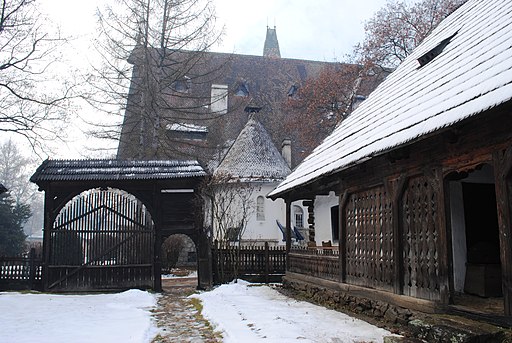Székely National Museum

History
The present museum building was built between 1911-13, based on the plans of Kós Károly. It is currently maintained by Kovászna County. The Székely National Museum Foundation, re-registered at the end of 1992, provides ongoing support to the museum (research funding, collection development, infrastructure, publication funding).
The idea of founding a Székely museum was first raised by Fekete Sámuel in 1868. The museum was founded in 1875 by Zathureczky Emilia, widow of Cserey János, in Imecsfalva. Her co-founder was the first museum keeper, Vasady Nagy Gyula, who published his programme speech as the first text publication of the museum in 1877. In the same year, their most valuable artefact was added to the collection, the Apor Codex, which contains, among other things, the Book of Psalms from the so-called Hussite Bible (the oldest surviving Hungarian Bible translation), and the later destroyed Csereyné Codex (the oldest Hungarian hymnal).
By 1879, the founders managed to have the private collection officially taken over by the representatives of the Székely community, so that it formally became the common property of the Székely community. At that time the collection, which had grown to more than 9000 items, was transferred to Sepsiszentgyörgy. The Székely Mikó College housed the institution until the present main building was completed.
According to its statutes of 1882, its collection is the inalienable property of the Székely people.
The institution became a modern museum under the museum keeper Nagy Géza (1881-89). Among other things, professional archaeological excavations in Székelyland, the excavation of Transylvanian medieval wall paintings, and the archival research in Sepsiszentgyörgy were started. The first significant publication of the Székely National Museum (Nagy Géza: Data on the origins and former habitation of the Székelys, Sepsiszentgyörgy, 1886) was published in this period.
From 1889 until 1949, the museum keepers were selected from among the teachers of the Székely Mikó College.
The present museum building was built between 1911-13, based on the plans of Kós Károly. The First World War halted the construction and in 1917 it was requisitioned for a military hospital. From 1921, work could continue with interior painting and furnishing.
To escape the Romanian invasion between 28 August and 24 October 1916, the museum's material was taken to the Hungarian National Museum in Budapest, only to be returned in October 1922.
Between 1930 and 1937, the oldest Hungarian open-air ethnographic museum was established (the one in Balassagyarmat was established at the same time).
In 1943 Kós Károly drew up plans for the extension of the building.
The most valuable part of the rich collections was evacuated to Western Hungary to escape the Second World War, but on 29 March 1945 it suffered a heavy loss: 52 chests of museum material were destroyed by a bomb hit at the Zalaegerszeg railway station.
In 1949 the museum was nationalised, and in 1952 the use of its name was banned, at which time it was still the largest rural Hungarian museum in the Carpathian Basin. In the meantime, it was deprived of part of its collection: some 350 000 items of archival material were removed in several stages up to 1964, establishing another important collection, the State Archives in Sepsiszentgyörgy.
In 1979-81, the extension of the building, planned for decades, was completed with the adaptation of Kós Károly' plans by Gagyi Ferenc.
After the fall of communism at the end of 1989, the Székely National Museum retook its former name.
In addition to its rich natural history, archaeological, historical, ethnographic and fine arts collections, the Székely National Museum also has a library with significant 18th-19th century Hungarian printed material and manuscripts.
